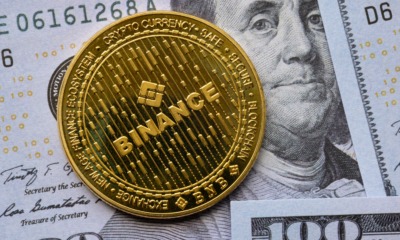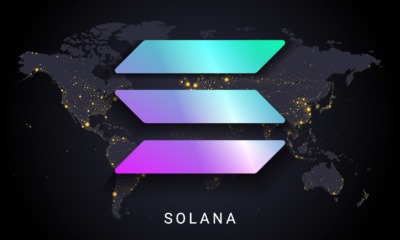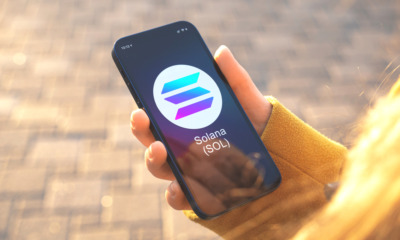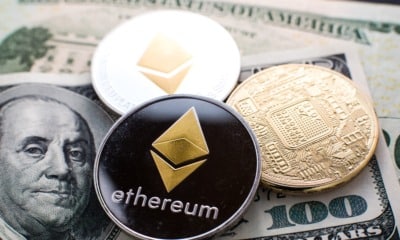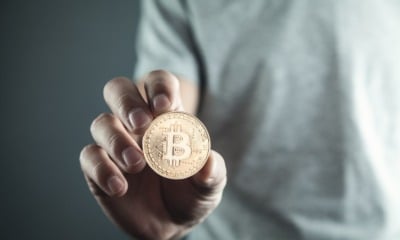Don't Miss
Bad News for Miners: Siacoin to Block Mining Hardware via Hard Fork

In a recent development, the Sia blockchain network decided to release code for a hard fork which will prevent Siacoin miners from using mining rigs created by large mining manufacturers. As one representative of Sia stated, some mining hardware manufacturers, most notably Bitmain and Innosilicon, are viewed as bad actors that are harming the network.
Because of this, the founder and current CEO of Nebulous, David Vorick, announced that Siacoin would go through a hard fork on October 31st. According to him, users who wish to stay on Siacoin’s network will have to upgrade to a new code version 1.3.6 before the hard fork. Additionally, he mentioned that all large exchanges would participate.
Mining hardware producers are harming the Sia network
The decision to perform a hard fork came after a long debate within the Sia blockchain community. The discussion lasted for an entire year, and it was finally decided to enact a hard fork in October.
Due to the fact that Bitmain mined Siacoin for months in secret, and Innosilicon managed to mine around 50% of Siacoin hashrate to one single address, it was decided that only ASIC processors created by Obelisk will be able to mine Siacoin in the future.
In short, ASIC miners made by Innosilicon, Bitmain, and likely other mining hardware manufacturers will be blocked from the blockchain.
The Siacoin team still prefers ASIC-based mining to GPU-based mining, since a lot of GPU-based mining environments experienced 51% attacks in the past, while ASIC mining projects managed to avoid such incidents. At the same time, only mining equipment created by Obelisk will be allowed.
Is Siacoin heading towards mining centralization?
Obelisk is a known subsidiary of Nebulous, the firm behind Siacoin, which is why many have criticized the move, calling it nothing more than a way to protect the investment made in Obelisk. A large part of the crypto community believes that this will only create a monopoly on Siacoin mining and that it is another step toward mining centralization.
It should be noted that Siacoin is no stranger to hard forks, and it had several of them already. The change of algorithm previously led to two forks that separated from the network — Sia Prime and Sia Classic.
Additionally, back in July, Hyperspace also decided to separate itself from the network because of numerous disagreements concerning development.
They also posted a statement regarding the newly announced hard fork and said that Hyperspace has different views than Sia. This is why they forked in the first place, and that they will keep the blake2b hashing algorithm. Furthermore, as part of the same announcement, Hyperspace invited Bitmain and Innosilicon users to join Space Cash mining at any time.
For real-time trade alerts and a daily breakdown of the crypto markets, sign up for Elite membership!
Disclaimer: This article should not be taken as, and is not intended to provide, investment advice. Global Coin Report and/or its affiliates, employees, writers, and subcontractors are cryptocurrency investors and from time to time may or may not have holdings in some of the coins or tokens they cover. Please conduct your own thorough research before investing in any cryptocurrency and read our full disclaimer.
Image courtesy of Lukasbieri/Pixabay
Don't Miss
A Guide to Exploring the Singaporean ETF market

Singapore’s Exchange Traded Fund (ETF) market has grown, offering investors diverse investment opportunities and access to different asset classes. As the market evolves, investors must navigate these uncharted waters with a clear understanding of Singapore’s ETF landscape. This article explores the trends, challenges and strategies for navigating the Singapore ETF market. To start investing in ETFs, you can visit Saxo Capital Markets PTE.
The Singaporean ETF Market: Exponential Growth
The Singapore ETF market has seen significant growth in recent years, with an increasing number of ETFs covering a wide range of asset classes and holders. different investment topics.
One of the notable trends in the Singapore ETF market is the growing diversity of available options. Investors can now choose from ETFs that track domestic and international stock indexes, bonds, commodities, and specialist sectors or themes. This diverse range of ETFs allows investors to create comprehensive portfolios tailored to their investment goals.
The growth of the ETF market in Singapore is also due to growing investor demand for low-cost, transparent, and accessible investment vehicles. ETFs offer benefits such as intraday liquidity, real-time pricing, and the ability to trade on exchanges. These characteristics have made ETFs attractive to retail and institutional investors who want exposure to different asset classes.
Regulatory Landscape and Investor Protection
The Monetary Authority of Singapore (MAS) is the…
Don't Miss
Property Loans for Foreigners in Singapore That You Must Know About

Intending to invest in a residential or commercial property in Singapore?
When it comes to foreigners applying for a loan in Singapore, things can be pretty hard regardless of the reason whether you need the property for personal or business purposes.
In Singapore, buying a property is challenging, whether you are a foreigner or a native, and sometimes applying for a loan is the only way for you to afford it.
HOW MUCH CAN YOU BORROW FOR A PROPERTY LOAN IN SINGAPORE?
As for the Foreigner Loans, in Singapore, there is an exact amount of money you can borrow to finance the purchase of a property.
In this sense, Singapore has the Loan to Value Ratio (LTV).
The LTV ratio is what determines the exact amount of money you can borrow for a property loan, which changes depending on where you try to obtain the loan:
- If you are applying for a bank loan, you can borrow a maximum of 75% of the value of the property you want to purchase. That means if you are looking for a property that costs $500.000, the maximum amount of money a bank lender can give you like a loan in Singapore is going to be $375.000.
- When you are applying for a loan with a Housing…
Don't Miss
CoinField Launches Sologenic Initial Exchange Offering

CoinField has started its Sologenic IEO, which is the first project to utilize the XRP Ledger for tokenizing stocks and ETFs. The sale will last for one week and will officially end on February 25, 2020, before SOLO trading begins on the platform. Sologenic’s native token SOLO is being offered at 0.25 USDT during the IEO.
Earlier this month, Sologenic released the very first decentralized wallet app for SOLO, XRP, and tokenized assets to support the Sologenic ecosystem. The app is available for mobile and desktop via the Apple Store and Google Play. The desktop version is available for Windows and Mac.
“By connecting the traditional financial markets with crypto, Sologenic will bring a significant volume to the crypto markets. The role of the Sologenic ecosystem is to facilitate the trading of a wide range of asset classes such as stocks, ETFs, and precious metals using blockchain technology. Sologenic is an ecosystem where users can tokenize, trade, and spend these digital assets using SOLO cards in real-time. The ultimate goal is to make Sologenic as decentralized as possible, where CoinField’s role will be only limited to KYC and fiat ON & OFF ramping,” said CoinField’s CEO…
-

 Blogs6 years ago
Blogs6 years agoBitcoin Cash (BCH) and Ripple (XRP) Headed to Expansion with Revolut
-

 Blogs6 years ago
Blogs6 years agoAnother Bank Joins Ripple! The first ever bank in Oman to be a part of RippleNet
-

 Blogs6 years ago
Blogs6 years agoStandard Chartered Plans on Extending the Use of Ripple (XRP) Network
-

 Blogs6 years ago
Blogs6 years agoElectroneum (ETN) New Mining App Set For Mass Adoption
-

 Don't Miss6 years ago
Don't Miss6 years agoRipple’s five new partnerships are mouthwatering
-

 Blogs6 years ago
Blogs6 years agoCryptocurrency is paving new avenues for content creators to explore
-

 Blogs6 years ago
Blogs6 years agoEthereum Classic (ETC) Is Aiming To Align With Ethereum (ETH)
-

 Blogs6 years ago
Blogs6 years agoLitecoin (LTC) Becomes Compatible with Blocknet while Getting Listed on Gemini Exchange

